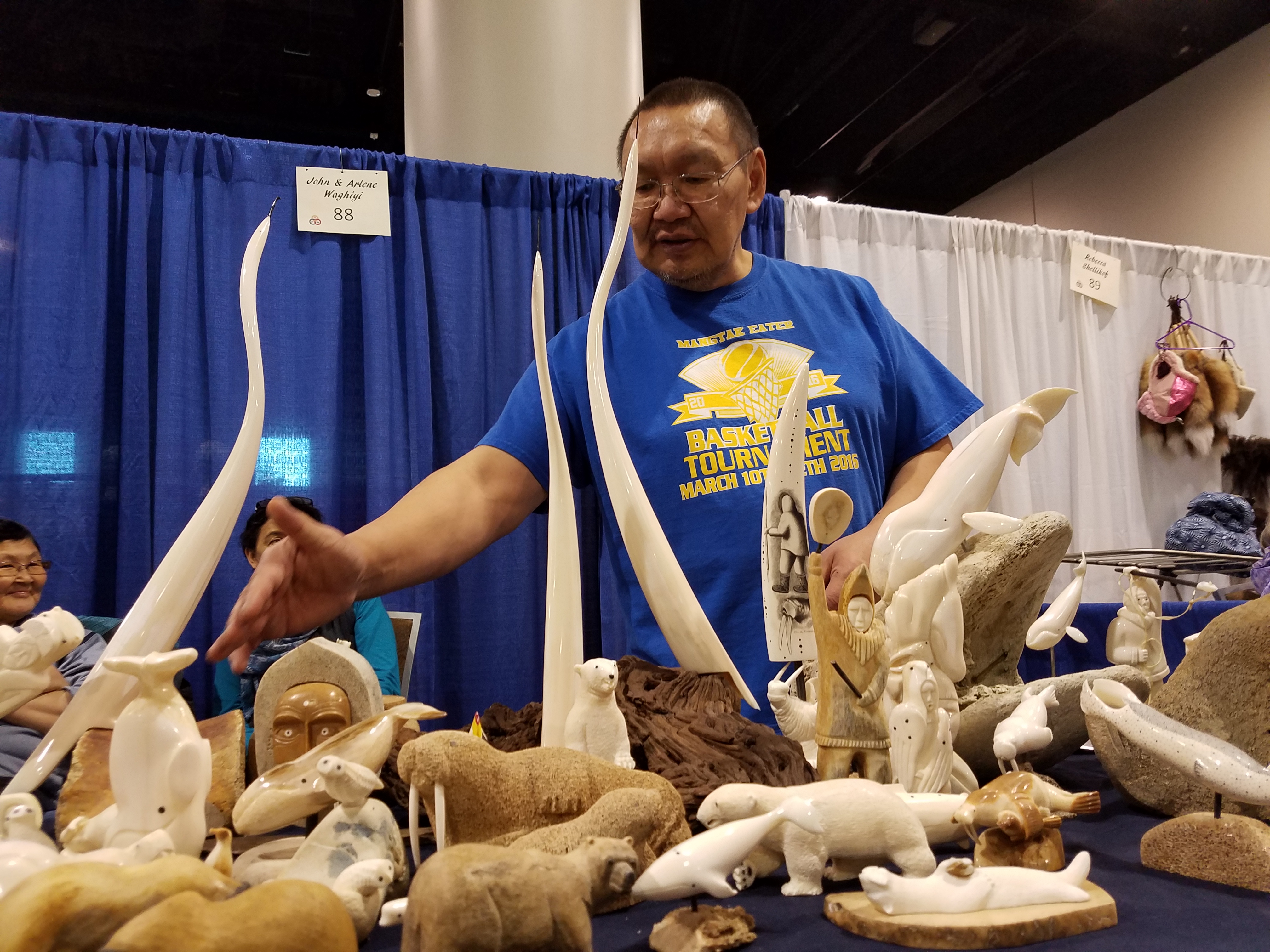How state-level ivory bans are hurting Alaska Native hunters and their communities
On top of climate change, Alaska Native subsistence communities must now contend with a growing threat to a key source of income — local ivory bans meant to protect elephants.

Perry Pungowiyi, a Yupik artist and hunter from western Alaska, says there are two big changes that have made the tradition of walrus hunting in the Bering Sea more difficult than it used to be.
Both present a direct threat to a way of life for Alaska Natives who depend upon the walrus as a source of food and a source of ivory used for Native works of art.
“The present dangers right now you’ve heard, the shrinking of the ice sheets and stuff like that,” Pungowiyi told a seminar in Washington, D.C. in early June. “We’re adapting to that and so is the walrus.”
But it’s just as hard to navigate changes in the political environment that have arisen in recent years — new legal obstacles in some states that block the sale of traditional Native artwork made from walrus ivory.
[Some U.S. state ivory bans affect Alaska Native carvers. A new federal bill aims to override them.]
The obstacles are an outgrowth of the worldwide campaign to save endangered African elephants by banning the sale of elephant ivory. In response to that 2016 ban to save the elephants, some jurisdictions have also banned the sale of products made from walrus ivory and fossilized mammoth ivory.
In many cases these bans have been enacted because it is easier to enforce an outright ban and less expensive than to put practices in place to determine the source of the ivory.
But that can be done.
The Alaska Native artists say that their trade — which is entirely legal under federal law — is suffering because a half-dozen states have so far enacted broad bans on all commercial ivory.
This has reduced the market for Alaska Native artists who use the proceeds from the sale of ivory artwork to help support subsistence hunting, which in turn supports their communities. Many people rely on walrus for more than half of their diets and ivory is a byproduct.
“We’d rather get our own food than go to a grocery store when we have no money,” Pungowiyi said. “We’re trained to harvest our own, so that’s what we do.”
“All the food and the ivory that we harvest is shared equally among my crew members. A lot of times that sale of the ivory will determine whether we are able to go out and harvest more walrus, so it goes hand in hand,” he told a Washington, D.C. group.
Pungowiyi was one of a handful of Alaskans who traveled to Washington to speak to members of Congress and staff for an event titled “Walrus and Our Way of Life.”
Alaska Sens. Dan Sullivan, Lisa Murkowski and Rep. Don Young are trying to generate enthusiasm in Congress for a bill that would prohibit states from banning the ivory trade and overturn the laws now in place in six states.
The bans were approved with good intentions, Sullivan told the group, but the backers did not understand the negative consequences for those who have hunted walrus for thousands of year in the Arctic.
Most states do not ban the sale of Native artworks made from walrus ivory, but the trend is worrisome and it has become more difficult to sell artworks.
“Banning the ivory trade would really affect many people in our region. So it is very important for us to keep using ivory as a source of income,” said Sylvester Ayek.
“Everything we bring home is shared with the people in the village,” he said. “Our biggest challenge today is climate change caused by global warming. The sea ice is getting thinner and forms later in fall time and disappears earlier in spring time. Our challenges still exist today in that way for the hunters.”
The Pacific Walrus population is healthy, said Vera Metcalf, the director of the Eskimo Walrus Commission, which helps manage the walrus population in collaboration with the U.S. Fish and Wildlife Service.
There are about 283,000 walrus in the region and hunters in the U.S. and Russia kill about 4,000 per year, with about 80 percent of the U.S. harvest being taken by the two communities on St. Lawrence Island, Gambell and Savoonga.
“It is a cultural, nutritional and very important natural resource to us,” she said.
Melanie Bahnke, the president of Kawerak, a nonprofit in the Bering Strait region, said it is hard to describe what the loss of ivory artwork sales would mean to the culture, but it would be almost like banning music.
“Can you imagine a world without music? Because that’s what it would feel for us if our artwork is banned,” she said.
Dermot Cole can be reached at de*********@***il.com.